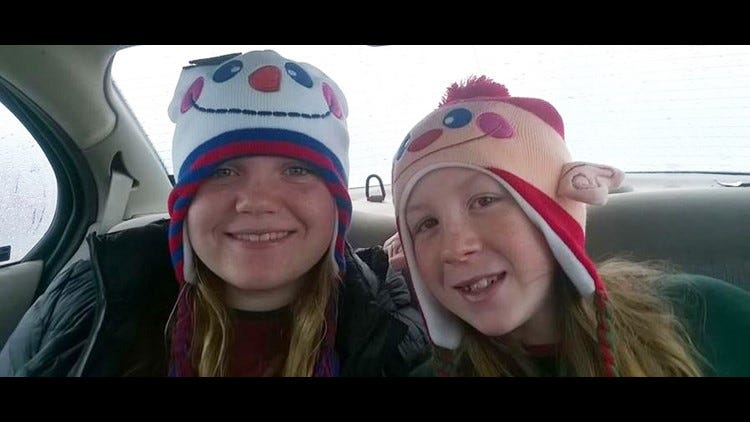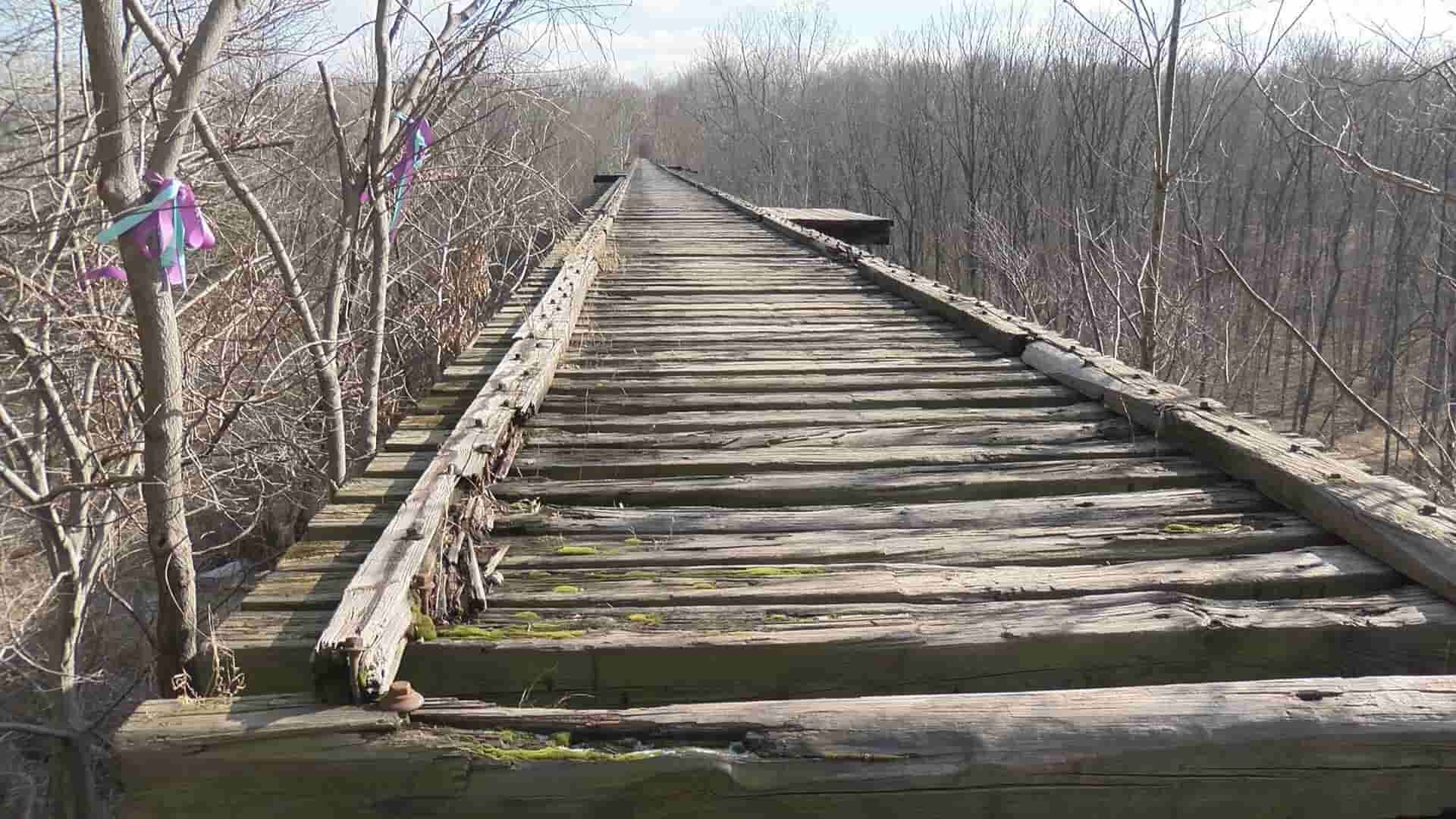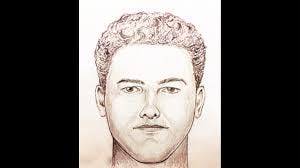
Law enforcement has video and audio of the perpetrator who murdered Abby and Libby — but the case remains unsolved.
On February 13th, 2017 Abby Williams, 13, and Libby German, 14, had an unplanned day off from school. They were dropped off a nearby park on an unseasonably warm day to explore an area they knew well. The girls made their way to the Monon High Bridge. Locals call it the “high bridge.”
Monon is 63 feet high and 853 feet long, with aging railroad ties stitching it together over a rusted steel frame. It is walkable if you don’t fear heights. Some of the ties are rotting so anyone crossing the bridge would need to keep their eyes on their feet. It is not a bridge you would venture out onto if you weren’t familiar with it.
The bridge leads to a dead-end at the top of a hill.

A brief timeline shows the two girls were dropped off at 1:30 at the park. At 2:00 Libby took a Snapchat photo of Abby walking across the bridge. Bare brown trees can be seen in the distance against a mostly blue sky. Abby is wearing sneakers and a light jacket.
At 3:15, Libby’s father Derek German comes to collect the girls. He sees no one at the pick-up point and as Libby was normally on time, he rings her cell phone. Derek gets no answer so he calls her grandmother, Becky, to see if Libby has checked in. Having heard nothing, Becky also becomes concerned and involves her husband, Mike, in the conversation.
Becky and Mike ask AT&T to give a “ping” to Libby’s phone but it’s not possible. Now worried, the three adults call the police. By 5 o’clock, the Delphi Police, Carroll County Sheriff’s Office, and volunteers begin a search that is only suspended when darkness falls.
The next day was February 14th, Valentine’s Day. The search continues until a radio call comes in that two bodies were found 50 feet from where the girls had been dropped off, on the banks of Deer Creek.
Two and a half years later, the public still does not know how Abby and Libby were murdered. Despite numerous press conferences by law enforcement (LE), involvement from the State Police and FBI, and a huge internet family of amateur sleuths — this case seems to be moving from chilly to cold.
They filmed and recorded him
Much is known about the Delphi murders, yet, even more, is speculated. There is no debate, however, about the following facts:
· Libby captured an image of a man (known as “Bridge Guy” or BG) walking toward them across the bridge.
· Libby audiotaped much of their encounter with BG secretly, using her phone.
· Libby recorded both girls saying someone was following them.
· The killer says, “Guys, down the hill” in an authoritative voice.
· The police have additional evidence, which they have not released.
· The police have never revealed how the girls were killed, except that it was clear from the beginning foul play was involved.
The lack of released factual evidence, beyond video and snippets of audio, is maddening. It has, predictably, spawned hundreds of amateur sleuths to investigate this case.
The video
In viewing the 1-second video of BG, speculation runs rampant. Many assert that BG dresses like a guy from Indiana, a local. Some note that he seems overdressed for the weather. Others say the bulge of a gun can be seen in his jacket. Online forum sleuths speculate he is left-handed.
The original footage was a still photograph of a man crossing a bridge, his face mostly obscured. It was taken from the later released video, made by Libby.
It’s tempting to watch the BG video and see an older man, but police have said they now believe the suspect is between 18 and 40, and may look younger.
It is difficult to assess the man’s gait since walking across the high bridge required looking down and stepping carefully, even for someone who knew the bridge.
The audio
Police released part of an audio recording Libby made with her cell phone. In it, a clear male voice can be heard speaking the words, “Guys, down the hill” as if directing the two girls. He sounds calm but authoritative.
In the original release of audio-only the words, “Down the hill” could be heard; a subsequent audio released in April 2019, the word “guys” is included. This evidence is part of a pattern by police to release partial information, making it difficult to know what evidence may exist.
The sketches
Law enforcement has released two sketches of the suspect, nearly two years apart. The first came out in July 2017 and shows a man with wide-set eyes wearing a cap and hoodie-style sweatshirt. He looks unremarkable and middle-aged. The FBI artist based it on fresh information from a witness who saw a man near the bridge on February 13th, 2017.

The second sketch was released in April 2019 and shows a much younger man. Police have said this drawing was based on the video, but also on a witness description. He is clean-shaven but has some of the same features as the original sketch. (The IndyStar reports that this sketch was actually drawn shortly after the bodies were discovered, on February 17th, 2017).
A few problems with murders in small towns
Sleuths generally agree that the killer is local, in a town of 2,893 people.
State Police Sgt. Kim Riley, quoted in the IndyStar, sums it up:
“It’s probably one of the stronger theories that we have at this time, based on the terrain and the location. We have a strong suspicion that [the killer] is either from the area, has visited there before or has lived in the Delphi area for a number of years.”
If it was a local man, it should be easier to solve this case. Yet as anyone who follows true-crime knows, small-town residents can play their cards very close to the vest.
Problem one: some people in small towns (like people everywhere) don’t want to believe a family member could commit a horrible crime.
They may see their husband, brother or uncle as having some things in common with BG. Maybe his voice is familiar. But they brush it off because the idea of someone they know murdering two innocent girls, with what looks like extensive premeditation, overloads the imagination.
Problem two: the opposite of the first — many think their enemy, or that weirdo at work, did it. This creates hundreds of false leads for law enforcement and they are obligated to check them out.
Problem three: do the police know who the killer is but are unable to find enough evidence to convict?
The five-season television show, Cold Justice, provides ample evidence of this problem. On the show, two former LE (a prosecuting attorney and a medical examiner) visit small-town LE to help solve cold cases. In many instances, they interview people who are 100% certain who did the crime, and local LE agrees. Yet they may lack a body or other key evidence needed to convince the prosecutor’s office to make an arrest and pursue a conviction.
Problem four: the inexperience of small-town law enforcement. Often, law enforcement has little experience dealing with multiple homicides, or highly publicized ones. A small staff is expected to devote all their energy to the investigation, one that obviously weighs heavy on their hearts.
The last problem (although there are still more) is the nature of small-town police being overwhelmed with other LE agencies. Now, there are too many chefs in the kitchen. The soup gets spilled on the floor. The lamb chops get burned. The chefs don’t get along, and waste time arguing. You get the picture.
Libby and Abby were heroes
This case has become famous for many reasons, and one is the sheer amount of heartbreak. Abby and Libby were smart, vibrant girls who would’ve grown into capable women making a positive impact on the world. Libby had the foresight and courage to not only record but film what was happening to them. She has been called a hero, more than once, by Delphi law enforcement.
They had a day off from school and a little chance at freedom, so precious to teenagers. Some dark presence found them that February day and that monster is still walking free.

